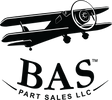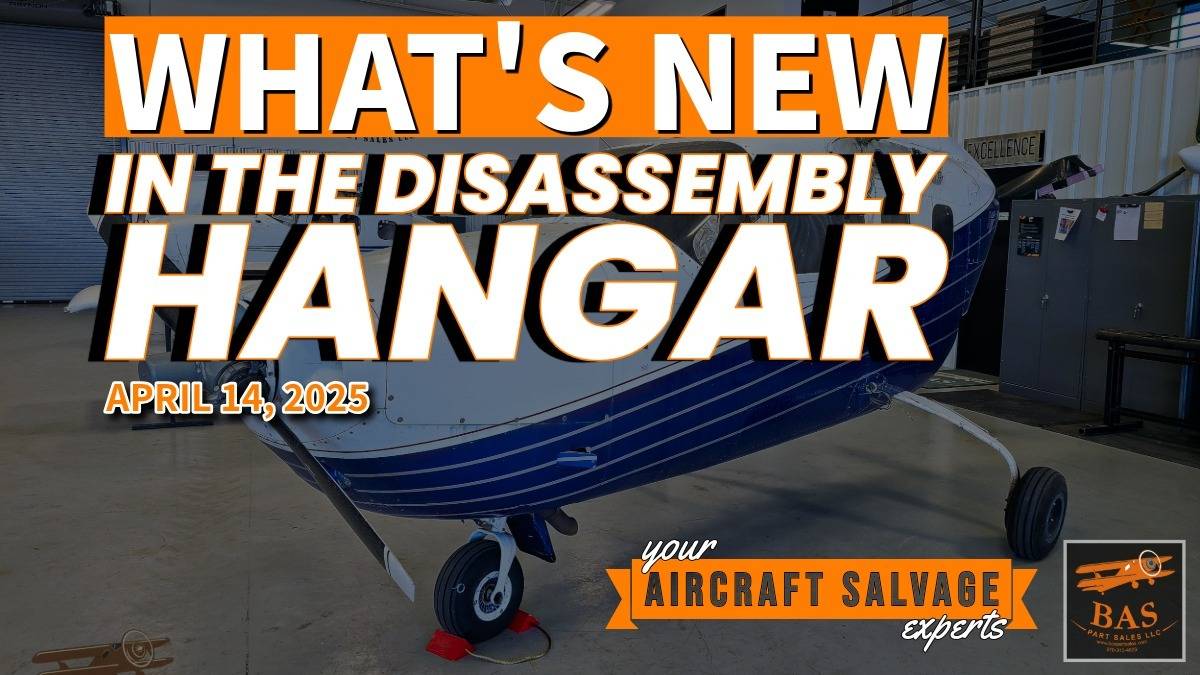New In The Aircraft Salvage Hangar- April 30, 2025
Posted by Clinton McJenkin on May 2nd 2025

The BAS Mechanics are back at it this week with four standout aircraft now under the wrench:
A Robinson R44 Raven, a Piper PA-24-250 Comanche with a gear collapse, a Piper PA-28-235 Cherokee that veered off-runway after a gusty landing, and a Cirrus SR22T are all in the teardown lineup. These airframes are packed with high-demand parts—rotor systems, gear components, engine mounts, control surfaces, and more—and they won’t stay on the shelf for long.
Have a question? Need pictures? Need a part? Need more information or assistance shipping an item? Get in touch...
Call: 970-313-4823
Email: [email protected]
Chat: Online or in the BAS Mobile App
Piper Comanche PA-24-250
Here's whats coming very soon:
· Lycoming O-540-A1C5 (Prop Struck)
· McCauley 3D32D412 (Prop Struck)
· (x3) Garmin GI-275
· Garmin GNC 355 GPS & Comm Radio
· Garmin GMA 345 Audio Panel
· Lynx NGT-9000 In/Out Transponder
· Nose Gear Assembly
· RH & LH Main Gear Assembly
· Wheels & Brakes
· Upper Cowling
· Rudder
· RH & LH Horizontal Stabilizer & Tabs
· Vertical Fin
· RH & LH Main Gear Door
· Wings
· RH & LH Aileron
· RH & LH Flap
· Wing Tips
· Engine Mount












Piper Cherokee PA-28-235
Here's what we have coming to our storefront very soon...
· Lycoming O-540-B4B5
· Hartzell Propeller HC-C2YK-1BF
· (X2) CGR-30C Engine Monitor
· Dual Garmin G5
· Garmin GMA 342 Audio Panel
· Garmin GTR 225
· Garmin GNS 430W
· Garmin GTX 335 Transponder
· Cabin Door
· Rudder
· Stabilator & Trim Tabs
· RH & LH Main Gear Assembly
· Seats & Interior Components
· Vertical Fin
· Wheels & Brakes
· RH & LH Aileron
· RH & LH Flap
· Main Wheel Pants
· Engine Mount
· Nose Gear Fork
· Baggage Door












Robinson 44 Raven
Here's what we have coming to our storefront very soon...
· Lycoming O-540-F1B5
· Garmin GTX 328
· uAvionix ADS-b Tail Beacon
· Tail Rotor Blades
· Cyclic Control
· Collective Control
· Exhaust
· Main Rotor Components
· Tail Rotor Components
· Rotor Drive Sheave
· Cabin Doors









Cirrus SR22T
Here's what we have coming to our storefront very soon...
· Garmin G1000 Suite
· Garmin GMC 705 Auto Pilot
· BF Goodrich WX500 Stormscope
· Enviro Systems Air Conditioning
· Seats & Interior
· Parachute Systems
· RH & LH Cabin Door
· Control Components
· Rudder
· Engine Mount
· LH Aileron
· Horizontal Stabilizer
· Wing Tips
· LED Nav Lights
· Seat Belts & Harness
· O2 System









Reach out and let us know how we can help you get back in the air. 97% of the time, we will ship the same day you order, and on international orders, too - Learn More. Our sales team is available Monday through Friday from 7 a.m. until 4:30 p.m. Mountain Standard Time. The website is open 24 hours a day, 7 days a week.
Have a question? Need pictures? Need a part? Need more information or assistance shipping an item? Get in touch...
Call: 970-313-4823
Email: [email protected]
Chat: Online or in the BAS Mobile App
Unrivaled Customer Service: Experience exceptional customer service and get the right parts the first time at affordable prices with one phone call or email to the world leader in aircraft salvage, BAS Part Sales.
90-Day Money Back Guarantee: Guaranteed to work and pass your inspection or your money back. We have the best guarantee in the industry, hands down! Our guarantee has some limitations as we do not accept returns on anything marked CORE, on any fuselage, or any item marked "No Returns Accepted".
Shipping: Our team is ready to get you the best shipping rates possible on every order...and thousands of parts get $10 Flat-Rate US shipping when you buy online. We can quickly combine shipping for multiple items or large items. If you need more information or a specific quote on shipping, get in touch with the BAS team today.
International Buyers: We can ship nearly any part to nearly any destination on Earth. On a daily basis we export aircraft parts to destinations around the world. Some countries have laws and regulations that impact international orders, so get in touch with the BAS Sales Team for answers and details about your international shipping needs.

Clinton McJenkin
Sales & Marketing Director
BAS Part Sales






